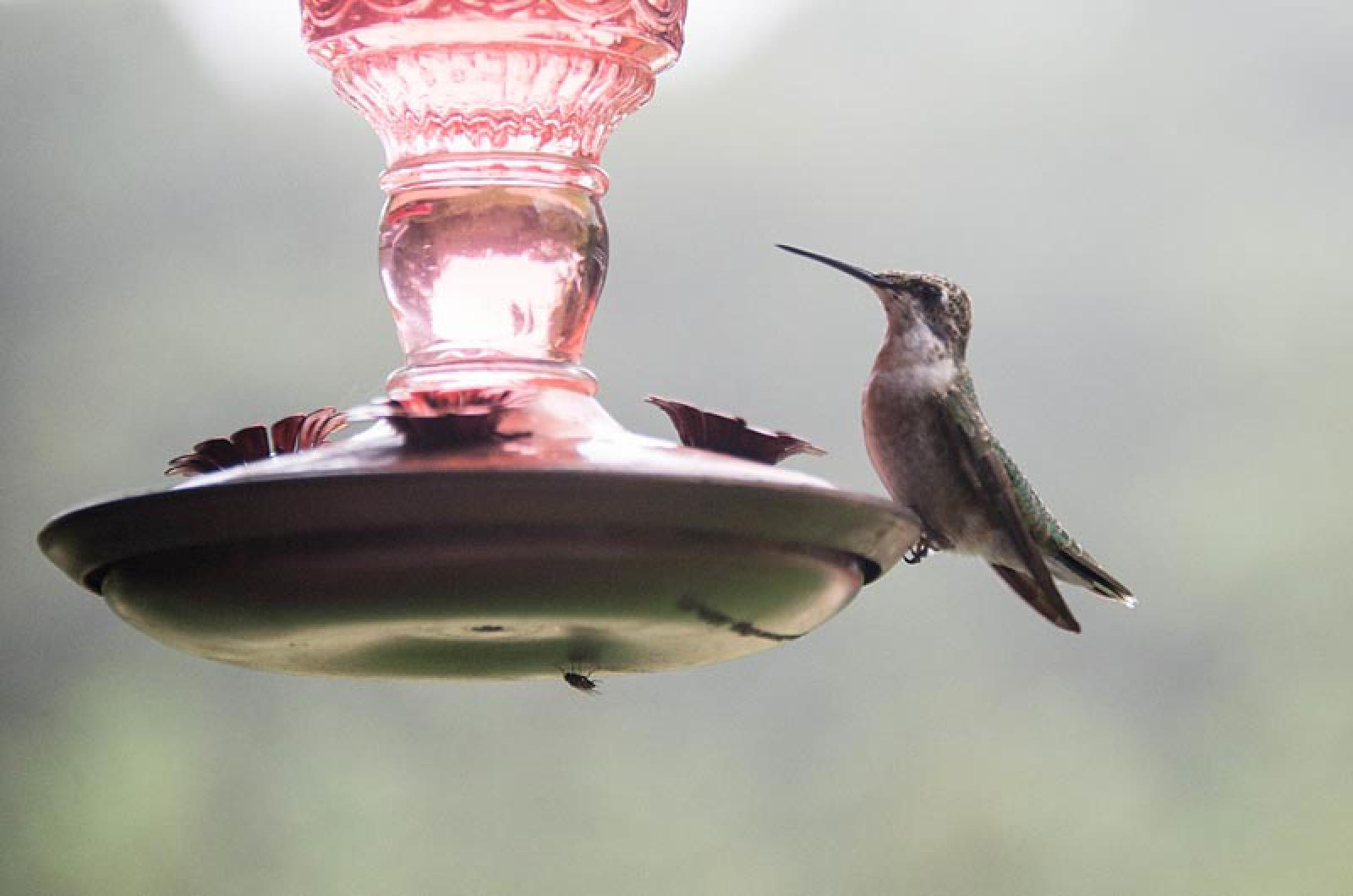Location, location, location. This adage rings true for real estate and for hummingbirds trying to find the best place to slurp sweet nectar for extra energy.
While we often think that it is the color of flowers that dictate attraction for this little sap sucker, one study shows that it is the location, plus quality and availability of the liquid, that drives hummingbirds to a specific nectar source.
Hummers do distinguish colors and can see them just as well as humans. They clue in on reds and yellows especially, as their retinal cones contain pigments in those shades that act as filters and heighten sensitivity to them.
However the study showed that these birds’ inclination to feed on certain flowers or feeders related more to their learned experience of the location of the most nectar-rich sources than to the color of the source.
Thus the basic advice for those who aspire to attract hummingbirds is to provide quality syrup, to keep the food source abundant and healthy, and not to move the feeder.
Practically speaking, this means providing a reliable source of good quality food in a clean receptacle.
Here are a few dos and don’ts that would please even the hungriest hummer:
Remember that hummingbirds use nectar for extra energy and subsist on other foodstuffs, including spiders, flies, gnats, and other insects. Nectar should be fresh and the feeder cleaned periodically to prevent fermentation or the growing of mold. Never use honey as a nectar source, as it can promote the growth of a harmful fungus that is toxic to hummingbirds. One part sugar to four parts water is the recommended formula.
One possible red flag is red dye #40.
This compound, also referred to as 2-naphthalenesulfonic acid, 6-hydroxy-5-((2-methoxy-5-methyl-4-sulfophenyl)azo)-, disodium salt, and disodium 6-hydroxy-5-((2-methoxy-5-methyl-4-sulfophenyl)azo)-2-naphthalenesulfonate, is derived from petrochemicals—specifically coal tar. My rule of thumb is don’t eat it if you can’t say it, which I extend to our hummingbird friends as well.
Red dye #40 is a dye additive found in red food coloring and in some commercial hummingbird food mixtures. Conventional wisdom says that hummingbirds are attracted to this color and will be drawn to liquids of the same pigment. Most feeders are red or have red components that will attract hummingbirds without needing to color the nectar.
The study I referenced above refutes all this emphasis on color, and some sources conclude that the red coloring in nectar is not only not necessary but could harm hummingbirds. Ornithologists are seeing red when it comes to this substance.
The Cornell Lab of Ornithology recommends against using red dye #40 in feeders, explaining that “There is no research that proves red dye #40 is safe for hummingbirds, and very compelling anecdotal information from experienced, licensed rehabbers that hummers who have been fed dyed food have higher mortality and suffer tumors of the bill and liver.”
To be fair, red dye #40 is an additive approved by the US Food and Drug Administration. Proponents of the red liquid have pointed out that there are no studies showing damage to hummingbirds specifically, though there is research on its effect on rats and mice. In those rodent studies red dye #40 was shown to be mutagenic and carcinogenic. and the food additive has been banned in six European countries.
When deciding for yourself, remember that flower nectar is colorless, which makes this this absence of hue the clear choice. There’s no sugar coating it: going natural will keep these birds humming along happy and healthy.
Suzan Bellincampi is director of the Felix Neck Wildlife Sanctuary in Edgartown, and author of Martha’s Vineyard: A Field Guide to Island Nature and The Nature of Martha’s Vineyard.




Comments
Comment policy »